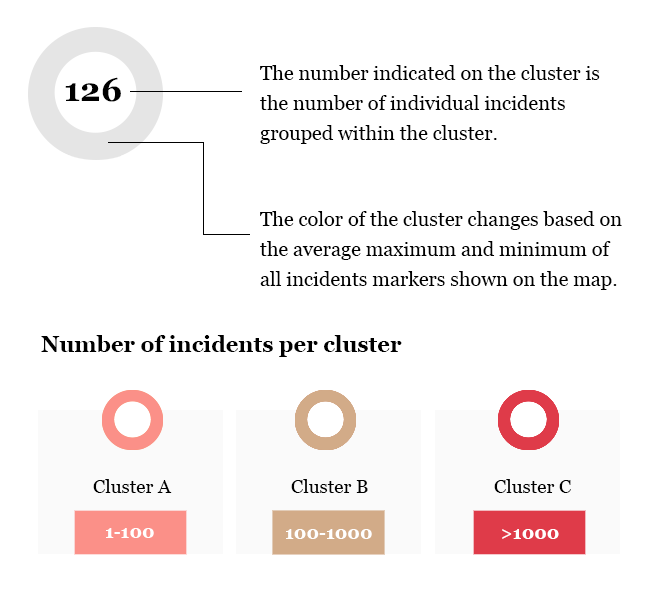You are here
Geo-located mapping of conflicts in Lebanon (January 2018 - June 2019)
Publication Date: 2015
- The map is continuously updated.
- Each mapped incident is categorised and classified based on a typology devised by Lebanon Support.
- The objective of the map is to provide different partners involved in peace-building, humanitarian and stabilisation activities in the country with accurate data and relevant information on areas prone to conflict.
Information sources: Media reports, NGO reports, aid actors reports, first-hand data collected by the Lebanon Support team.
Period of data collection: 27 June 2014 - 1 July 2019.
- To get the most out of our map, make sure to check out our definition of "conflict" , our classifications, and be sure to read the map legend below.
- Incidents may have more than one category or classification.
- To view all the incidents that took place in a specific location, first find our location on the map. After clicking on an individual incident marker at the location, click on the location link to be forwarded to its profile. All incidents that took place in that location will be listed in a filterable table there.
- Our filters below can help you find incidents by location, category, classification, date and more. At least one filter must be used for a search.


A cluster is a grouping of incident markers. Cluster marker colors indicate the number of incidents grouped within that cluster.
Clustering works by dividing the map into a square grid and grouping the markers into their respective squares. The size of a square in the grid changes at different zoom levels.


|
Conflict Analysis Digest, February 2018
The Conflict Analysis digest, is part of the Conflict Analysis Project, an initiative by Lebanon Support, with the support of the United Nations Development Programme (UNDP), and... Read more
|
Conflict Analysis Digest, January 2018
The Conflict Analysis digest, is part of the Conflict Analysis Project, an initiative by Lebanon Support, with the support of the United Nations Development Programme (UNDP), and... Read more
|
|
Border conflicts (Syrian border)
|
Border conflicts (Israeli border)
|
Power and governance conflicts
|
|
Violations, disputes and/or conflicts arising between rival armed groups along the Lebanese/Syrian borders which involve parties or militant groups from the Lebanese and Syrian side in both Lebanon and Syria. These conflicts also encompass transnational groups (such as faith-based regional groups, e.g. ISIS, al-Nusra Front) that cannot be considered as strictly Syrian, Lebanese or of any other national entity.
|
Violations, disputes and/or conflicts instigated by Israeli intrusions on Lebanese national territories, airspace, and territorial waters. While there currently is no Israeli military occupation on Lebanese soil, these events are classified as violations of Lebanese sovereignty and are indicative of the continuous tensions between Lebanon and Israel.
|
Violent or non-violent conflicts associated with antagonisms related to internal political tensions between local and/or national groups and parties. These tensions may be encouraged by internal, regional and international parties. Such conflicts are characterised by their defiance and/or opposition to central State power and governance.
|
|
Policy conflicts
|
Conflicts of Social discrimination
|
Individual Acts of violence
|
|
Conflicts associated with political decisions, government or state policies regarding matters of public concern, such as debates concerning law reforms, electoral laws, and protests of the government’s political decisions, among others.
|
Violent and unjust treatment of different categories of people and individuals based on race, age, gender or sexuality, committed by the State, groups and individuals, related to a lack of protection and rights, inefficiency of the Justice system and persisting social and economic vulnerabilities.
|
Violent incidents which do not have a specific or a known political agenda but are caused by the general proliferation of weapons, of trained and untrained soldiers or militants, by the general inefficiency of the Justice system, and past-traditions and histories of violence within society.
|
|
Conflicts of Socio-Economic development
|
Conflicts resulting from foreign intervention
|
|
|
Conflicts associated with lack of, or gaps in economic development, opportunities and access to resources.
|
Intervention or withdrawal of regional and international powers.
|


